
One image


Once upon a time …
In previous years, around the middle of the twelfth month I have sat down expressly to write an account of the past year. Reflective in nature and often littered with statistics relating to the images I’d made during the year it was a post I always enjoyed putting together. I’d look at the numbers and observe that X% were black and white, or that film and digital were evenly spread through my 365 yet film made up a larger proportion of my total output … etcetera, etcetera, etcetera (to quote a fictional King).

To be fair many of those annual reflections coincided with periods when I was undertaking formal study and so they also served a useful and practical purpose. They were a stock-take almost of what I’d achieved and what still needed to be accomplished versus the curriculum or against that year’s resolutions. This year however I am not undertaking any formal studies and nor am I about to make a list of resolutions. So, on the face of it the need for the traditional look back at the past year and for a formal stating of plans for the coming year seems rather redundant as we end 2023.
Yet, I’m sat here writing.

Well, partly it’s habit. I don’t set myself a timetable for posting to this blog, nor do I set a goal of a particular number of posts in any given period. Simply, I enjoy writing. So, when the mood strikes, or when I’ve something particular to share, I sit in my armchair (very rarely at my desk) and I write. Sometimes I have a fully-formed idea in my head but often-times it’s simply a vague notion and I follow the words as they tumble out of my head. There have also been times when even I’ve not realised what it was I intended saying until I was proof-reading the near-finished piece.

This post started as a vague idea yet I have arrived at this paragraph still unsure where I am heading.

I was chatting with John and Andy earlier this week and the subject of plans (not necessarily resolutions) for 2024 arose albeit briefly.
… the camera that is best for me in 2024 will be the camera that allows me full access to a number of tools that allow me to create photographs with full creative control. No AI involved. No Automation, no digital processing at the capture stage.
Andy … http://myholgapics.blogspot.com/2023/12/2024-and-answering-age-old-conundrum.html?m=1
What I found really fascinating though was that both Andy and John expressed their plans for 2024 in terms of the images they hoped to create not in terms of gear acquisition. Sure, the gear was mentioned but on the whole it related to kit they already own. “Shoot more Instax, shoot more 6×17 and 6×9” was one response. “Shoot more 5×7 … try Portra 160 in 4×5 and 5×7 … do some night shots” another.
The three of us correspond regularly, by which I mean daily pretty much, and we meet up when we can. However, electronic messaging is our go-to means of communication and our “group” WhatsApp chat is affectionately called BoFs … boring old farts … but could equally read best of friends too.
One topic that has remained constant throughout 2023 has been Gear Acquisition Syndrome, more commonly referred to as GAS. We all suffered with it during the past year, sometimes simultaneously, although one of the group (don’t worry John I won’t let on it’s you) has found a loophole declaring that if it’s a need then it’s not GAS. Let me give an example:
“… think about buying a [Chroma Cameras] Six -9 ( note already have the lens at 65mm , in a drawer , thus need a box to keep the dark in ( NO GAS) …”
Anonymous Member of BoFs

What of my own 2024 plans? Well, my thoughts align pretty much with Andy and John. After using Andy’s Chroma Cameras SIX:17 extensively over a couple of loan periods this year I took the plunge and bought a SIX:17 back for my 5×4 camera. My enjoyment of the panoramic format is no secret and being able to create 6×17 panoramas on 120 film has been a real treat. The availability of many different film stocks and the ease of home developing the films has been much appreciated. I thought that having just four frames per roll might be limiting but far from it; it’s actually helped me to up my game and compose images much more carefully thus eliminating the need to make several different images in order to chose the best later.
The back arrived just before Christmas but it wasn’t until the 29th of December that I had an opportunity to test it out. That test roll is awaiting its turn in the developing tank, hopefully later today (30th as I write) and so my first objective for 2024 will be to get out and really get to work with the back and integrate it into my regular photographic wanders.

The other photographic objective for 2024 is to incorporate the 5×7 format into my workflow. Like John I had my first taste of the format during 2023 and it immediately grabbed my attention and left me wanting to do more with the format. Sadly, it coincided with a period where getting out with a camera was difficult but 2024 will be the year that this format gets integrated into my regular routine I hope.
Finally, it would be remiss of me not to scatter a few statistical crumbs into this post.
Let’s start with 35mm. I used 23 different 35mm cameras in 2023 but the most used was the KMZ FT2 closely followed by the Canon VTDM. However, two cameras, both of them 35mm swing-lens panoramic, accounted for around a third of all my 35mm activity. The KMZ FT2 and Horizon S3 Pro have definitely earned their keep in 2023. The other two cameras in my top five 35mm were the Leica iiif and Zorki 4K. So three traditional rangefinders and two swing-lens panoramic cameras.
In terms of medium format it was no surprise that the panoramic format accounted for almost a third of the films. Whilst the Rollei Magic was the top overall it was the Chroma 617 and Holga Pan that dominated the table. Second on the list incidentally was the Mamiya Press which got used a lot in the first few months of 2023 (15 rolls) but gathered dust for the rest of the year.
Across the two formats black and white film accounted for 84% of the films used. The 45 rolls of colour film however represented the most colour film I’ve used in a year for quite a considerable time.

Whatever your plans for 2024 I wish you success and a very creative new year.
I couldn’t decide which image to use for my 365 today so enlisted the support of Andy and John, sharing the two choices with them both.
They weren’t helpful … voting one-all!


Both images Canon 5D mkII with 70-200 f4L.
Which gets your vote?


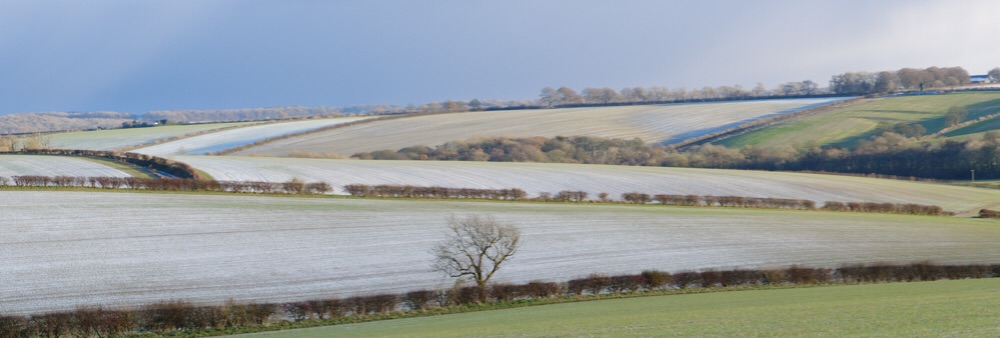





My Fuji X-T1 is not your run of the mill mirrorless digital camera, it has a secret beneath its cool, somewhat worn black exterior. A few years back I had it modified so that it now captures the full spectrum of light through UV, visible and infrared depending on what filters you employ on the lens. I’ve shared images from this camera many times in the past and its inclusion on the Wolds trip was very much a last minute impulse. As I was taking the 50-140 from the cupboard to finish packing I saw the X-T1 and popped it in the bag too.

I wasn’t sure that I’d use the camera as I was already taking the Fuji X-T3, along with a medium format film camera and the diminutive drone, all of whom have shared their results over the last few posts. As it turned out conditions on the Friday rendered the X-T1 redundant but I did make a few images on the Thursday afternoon during our recce mission which I will share here

Over-packing is something that I’m very prone to so I was pleased to have used the X-T1, albeit for just a few images, as it “justified” its inclusion. However, if I’m totally honest it wasn’t a vital piece of kit especially as I was carrying infrared film for the Chroma SIX:17 too. That said, digital infrared adds a completely different dimension to a photographic trip and had the Friday been blue skies and white fluffy clouds I suspect that the X-T1 would have been my most-used camera this trip.
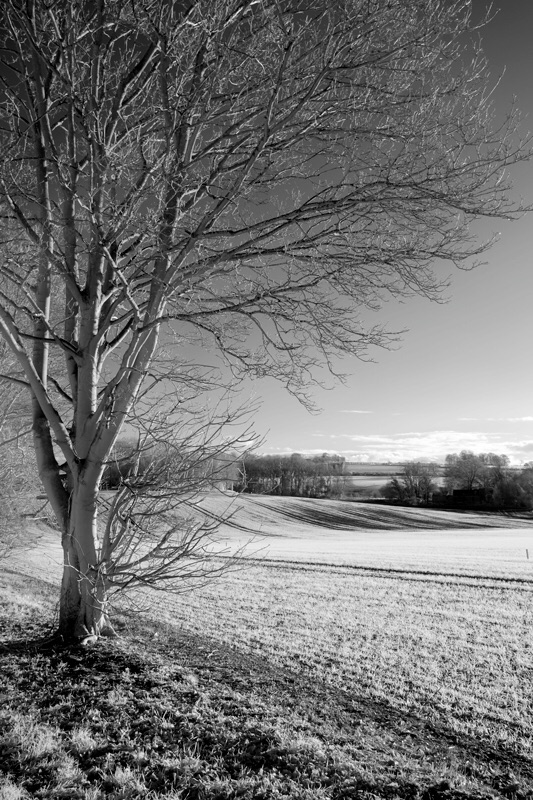


Chatting to a fellow photographer before this trip he enquired what camera (singular) I was taking and was somewhat perplexed when I shared the proposed kit list (none of which made the trip but that’s another story). He pondered how I could switch between formats and types of photography whilst out; surely I’d spend more time trying to decide what to use than actually using them. Whilst I could see the point I have to say it never fazes me. I tend not to duplicate formats when packing so if I view the scene and decide it suits a panoramic format for example I’ve only one such camera with me, the Chroma SIX:17 this trip. If it’s a scene which needs exploring and experimenting then it’s the digital camera for that job. For the same reason I try not to take too many lenses, choice can be the death of creativity at times, the paralysis that occurs when overwhelmed by choices.


So, there you have it. One and a half days, three cameras, two rolls of film, interesting conditions and several drone flights produced a good mix of images which I’m well pleased with. There may well be a bonus post later today with some iPhone sweep panoramas but other than that my trip to the Lincolnshire Wolds is now fully documented. I still have some RAW files to look at but I’m pretty sure that I’ve shared a representative sample in this series of posts.
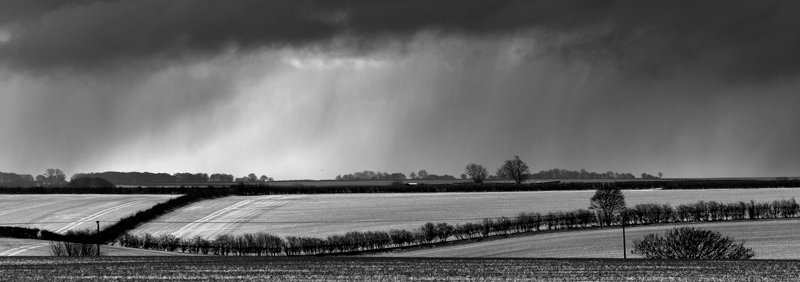

We awoke on Friday to a light dusting of snow and lovely frost. After a quick breakfast we were back on the road and heading back into the Wolds. The main roads were fine but as soon as we pulled off these onto the winding country roads that were our destination the going was more challenging.

If you have seen my Chroma SIX:17 post you’ve already seen our first “proper” stop of the morning but prior to that we checked out a couple of locations we’d seen on Thursday. Sadly, the light wasn’t playing ball there, falling on the background rather than the subject so although we did have a brief wander around the scene we moved on fairly quickly. We were out of the van long enough for my finger tips to go numb though!

v





It didn’t take me long to figure out a strategy for keeping my finger tips warm whilst still being able to operate the Fuji X-T3. I was carrying two lenses, a 50-140 and a 16mm prime, but found that the 50-140 stayed on the camera for most of the time. Allowing for the crop factor this equates broadly to a 70-210 lens in old-35mm-speak. In such cold conditions I found that the ability to use the camera on auto-pilot especially helpful so again would urge any newcomers to get out and practice, practice and practice until they can use the camera blindfold almost.


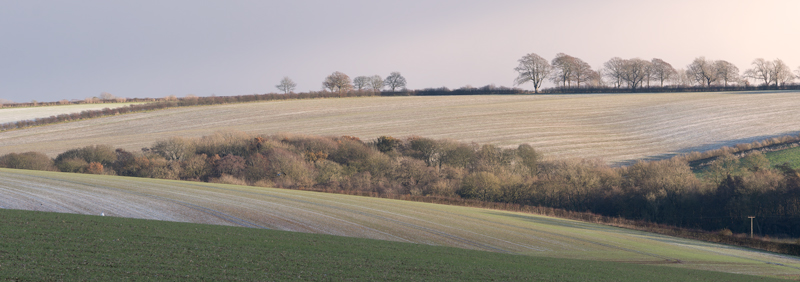

If you thought that this would be the end of my Lincolnshire Wold adventure then you have forgotten the bonus camera, my digital infrared Fuji X-T1, coming up in the next instalment! In the meantime my favourite Fuji X-T3 image from the trip closes out this post.

Several years ago I moved first from Canon to Nikon and then a few years later to Fuji, a process I discussed at the time and which became rather academic a few years back when I returned to the film photography niche. However, I do still use both digital and film albeit the number of times I take out a digital camera is far eclipsed by the number of outings my various film cameras enjoy. However, for my Lincolnshire Wolds visit I took a selection including film, the drone and now it’s the turn of the Fuji X-T3 to be showcased.

I arrived at Dave’s house at lunchtime on the Thursday and after a brew and a catch-up (we’d not met in person since pre-pandemic) we set out in his van to catch the last few hours of daylight. A recce in readiness for the full day Friday was our objective. However, it didn’t go to plan – in a great way. I’ve already shared the drone images from which the observant will note that we had a decent sunset although the sky kicked off properly once I’d packed the drone away and we’d set off for home. Well, we did pull over and I grabbed the X-T3 and I’ve started this post with one of those images.

I’ve written before about the need to know your gear so well that the camera seems to disappear into the background and I’m very lucky that I still retain the muscle memory from when the X-T3 was my daily carry. One thing I didn’t realise until Dave asked whether I’d captured anything decent was that I’d not checked the LCD screen previews at all during the first hour we were out. That’s clearly a habit that using film cameras has “cured” me of!


I started the afternoon firmly in a black & white frame of mind, not surprising given how much black and white film I’ve got through this year (don’t ask!). But when the sky kicked off as we drove home I swiftly moved into a more colourful outlook.



So, our short recce in readiness for a full day out on the Friday started gently and ended in spectacular fashion. We headed home with some ideas for the following morning, a clear idea on the first location of the day … and a few images to get us off to a great start.
Watch this space for a selection of images captured with the Fuji X-T3 on the Friday. Meantime, I will leave you with my favourite X-T3 image from Thursday.

Continuing the series of posts following my day and a half in the Lincolnshire Wolds it’s the turn of the diminutive drone today. I’ve posted on my blog many times in the past with updates on my drone adventures … and misadventures. It’s no secret that despite being a very enthusiastic film photographer I have loved playing with the drone over the last few years. A one stage I had four in my fleet but these days I just use the one, a lightweight DJI Mini 3 Pro which is plenty of drone for my modest needs.

Usually when I take the drone out it’s the only camera I have with me and typically it’s pre-sunrise when I go out. It’s very rare therefore for me to travel with cameras and drone but as this was as much a recce as a “shoot” I had a variety of cameras with me as I mentioned in part one. The drone was a “just-in-case” addition to my bag and in the event I was very glad to have it with me.

It will come as no surprise to my regular reader that my favourite mode when using the drone is the panoramic function. There are various options and I enjoy playing with them all. Usually I would have the file type on the drone set to RAW and would therefore create the stitched panoramas at home on the computer. Prior to this trip I’d updated the firmware and fly safe database on the drone but, crucially, I had forgotten that many settings get reset in the process including the one to capture my panoramic files as RAW. Not a major problem as the drone will stitch panoramas whist in flight and produce a JPEG however it limits my post-processing options and occasionally the drone produces a suboptimal result. Plus of course I like to be in full control of all aspects of the process. C’est la vie, I still have some pleasing results and have learned another small lesson.

Although the controller screen gives a good view of what the drone’s camera is capturing I don’t feel it is sensible to be chimping whilst concentrating on safely flying the drone. I use manual exposure controls and an on-screen histogram to keep me on the right path exposure-wise but also use the drone’s automatic exposure bracketing (AEB) function for all non-panoramic images. Capturing five RAW images using AEB in this way gives me maximum options later when finishing the images on the iPad or computer.

Despite holding the necessary qualifications to use the bigger drones with almost as much freedom as my lighter drones I chose to only keep the Mini 3 Pro when it came to rationalising the number I owned. I’d originally considered selling two and keeping two which is what I did at first. However, over the following six months, during which I used a drone regularly, I found that I was using the small sub-250g model most of the time. Its small size means that the drone, four batteries and the controller all fit in a tiny bag. It can also be deployed very quickly at need, very useful when the light is changing rapidly. As a photographer I need kit that doesn’t get in the way of creating the image and the Mini 3 Pro excels in this department.
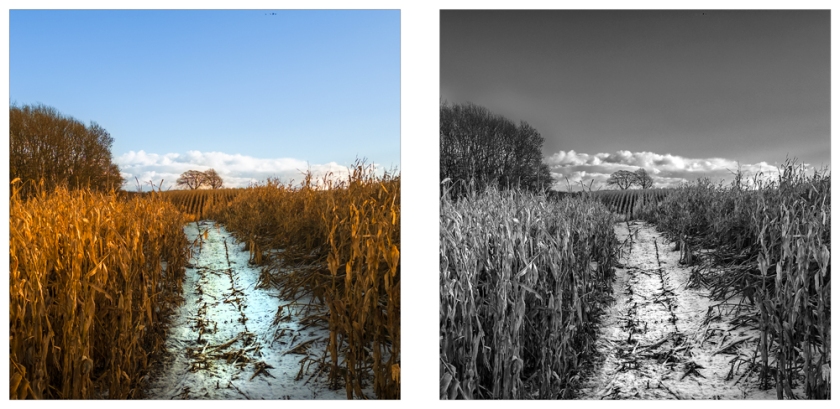
As I mentioned earlier, usually when I take the drone out it’s the only camera I have with me so to pack it in my bag with an interchangeable lens digital camera, a 6×17 panoramic film camera and a digital infrared camera was a big departure from my norm. Whilst it probably won’t become the norm to pack such a diverse kitbag for a day out I certainly wouldn’t be concerned about packing the drone if I thought it would be useful. I’ve proven to myself that I can work with both digital and film on a day out or with pinhole and panoramas simultaneously so adding a drone into the mix should be perfectly achievable.



I shall finish with my favourite drone image of the trip (above). I chose this because it illustrates one of the key things I have learnt during my time photographing the landscape with a drone. Just because the drone can, legally, fly at four hundred feet above the ground it doesn’t mean you always have to fly at that altitude. The drone was around twenty to thirty feet above me when I made this image. I often find that just being able to gain a little extra height above the tripod makes for some interesting images.
I hope that you’ve found an image or two to like here, let me know which is your favourite.
As mentioned in my previous post, I recently spent a day and a half driving around the Lincolnshire countryside with a very good friend and a bagful of photographic kit. One of the cameras was a borrowed Chroma Cameras SIX:17 which I had paired with my Schneider 90mm f8 Super Angulon lens. The lens was first produced in the 1950s and apart from the addition of multi-coating the design remained unchanged until it was discontinued in the early 2000s. Its 100° field of view is well suited both to the panoramic format and to how I see the world.

I took half a dozen rolls of film with me but despite the lovely light I used just two rolls of film in the end. One was Kodak Portra 400, a lovely colour negative film but at around £17 a roll it’s an occasional treat which might explain my very low throughput with that loaded. The other was a very out of date roll of Ilford FP4+, one of my favourite black and white films.

A quick word about the Schneider 90mm f/8 lens is perhaps apposite at this point. I use this lens with a 5×4 large format camera and it’s 210mm image circle covers the 6×17 format nicely too. For those used to digital cameras this would seem like a very small maximum aperture, but in this format it still renders a relatively shallow depth of field – although I’m not going to get into that mares nest here! Compared to my f5.6 large format lenses it is not as easy to focus with but the use of a loupe and a dark cloth (or coat) makes for a relatively straightforward experience.

As would be expected my first priority on getting home was to develop the two rolls of film. Indeed, as I type this a week later almost all of the digital files are sat on a hard drive un-processed and unseen for now. Developing films are part of the overall process of film photography and a part I enjoy. I still experience a thrill pulling a roll of well-exposed negatives off the reel almost fifty years after my first one. Now, the Portra yielded lovely results as can be seen although I had a mare with digitising the negatives but perseverance paid off and I was well pleased with the results in the end. The FP4+ negatives were similarly well exposed but the expired film showed some signs of deterioration which is most apparent in large expanses of single colours … or the sky as I call it.

So, having done the fun bit I am now faced with the task of working through the digital files from three cameras. Don’t get me wrong I enjoy using all of my cameras and the convenience of digital is not lost on me. However, it wasn’t until lunchtime on Day 2 when Dave was checking the images on the back of his Nikon D810 that I realised I’d not looked at the LCD screen at all in over six hours of photography.

I will close here with my favourite image from these two rolls … what’s the odds on it being my favourite of the trip?
Next time: the DJI Mini 3 Pro drone, or my guilty digital pleasure
You must be logged in to post a comment.